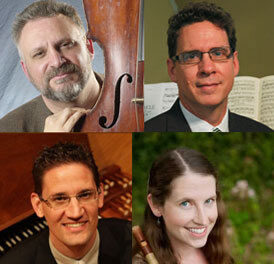For better or worse, orchestras tend to take on not only the artistic interests of their chief conductors (who, in the role of Music Director, select or at the very least approve the programs) but also gradually begin to mirror their personalities. This can be both blessing and curse, of course, as those who have lingered, here and there, far beyond their usefulness have repeatedly demonstrated to their audiences and management groups, and never mind their instrumentalists. In Durham, we’ve seen some of both. Allan H. Bone led the Duke Symphony Orchestra for many years, and his skill and ingratiating persona, and some remarkably talented players from the University (where parents don’t tend to send their kids in order for them to become musicians) and from the community, allowed him, over time, to build an estimable ensemble, one that from time to time brought in some very fine guest artists including, we’ve been told for years, a then-very-young pianist the Bones had met during a summer stay in Marlboro – a pianist named Murray Perahia. Maestro Bone’s successor at the helm of the Duke SO was Lorenzo Muti, who has gone on to make his presence felt in numerous other groups, including the Chamber Orchestra of the Triangle and, earlier, the Tar River Orchestra (of Rocky Mount) and the Opera Company of North Carolina. At Duke, Muti’s tenure was not altogether salutary, so when the incumbent music director, the brilliant and gifted conductor and teacher Harry Davidson, arrived, he was faced with an ensemble in some disarray, requiring him to concentrate primarily on recruiting and rebuilding the group. In his first season, he did so by concentrating on Bach. Last year, Mozart got the nod, and the season culminated with a memorable concert performance of Don Giovanni .
This season, which began with a Baldwin Auditorium program on October 9, the focus is on Brahms and his kith and musical kin, and the evening demonstrated at once how far Davidson has brought the Duke SO – and how much more work is needed. The opening work, Haydn’s “Oxford” Symphony, received an attractive reading in which the substantial string sections were often tightly unified. The tempi weren’t exactly fleet, but the slow movement worked its customary magic, and aside from some uncertainty in the horns, the minuet and trio went well, too. The group pulled together appreciably in the finale, despite a bit of relatively minor scrambling here and there, and the upbeat conclusion elicited some warm applause from the not-insubstantial crowd.
Cellist Darrett Adkins, who teaches at Juilliard and whose work with the NC Symphony, in Boone, we enjoyed several years ago, in another life (the review remains posted in a longish file found at http://www.spectatoronline.com/1999/073199/classicalc.html; readers should know that Spectator ‘s archives, always slow to load, seem even more sluggish now that the paper has folded*). That Davidson is able to draw soloists of Adkins’ caliber (and also vocalists like those who took part in last spring’s Don G .) speaks volumes about the Maestro himself and the work he has accomplished thus far at Duke, but there’s more to it than just that : Davidson has known this soloist since he (Adkins) was a wee lad of 12, back in Tacoma….
Alas, the performance of Schumann’s Cello Concerto, which even under the best of circumstances is a tough nut to crack, left a good bit to be desired. It’s our perception that Schumann, like Brahms, fares best when the tempi are at or above the nominal indications in the scores, and the first movement was, frankly, sluggish; this made it seem, to these ears, even longer than it is, despite the many felicities of the rendition, which took on a chamber-music quality more often than not. That, in turn, probably stemmed from the fact that the soloist’s little platform (not unusual for cellists) was backed up into the violins, forward of the conductor, rather than out in front of the band. The dynamics were nicely managed, but the cello’s lower register (and, occasionally, the other registers, too) didn’t always tell.
The concert ended with a stately reading of Brahms’ so-called “Haydn” Variations, which, Davidson explained, involve a theme now known not to have been by Papa H. No matter. This is one of the repertoire’s great orchestral essays, one that Brahms had to do before he was able to build up enough confidence to undertake his first symphony. There were some extremely happy sections in this work, which consists of the “Chorale St. Antoni” (not by Haydn), thirteen variations of often quite overwhelming beauty and warmth, and a Finale, which, here, was perhaps broader – and surely more powerful – than any performance of the score, live or “canned,” we’ve yet encountered. (For the record, Adkins sat in for this, taking a vacant chair at the back of the cello section.)
So there you are. By accident (presumably), we were treated to yet another admirable Haydn score in less than two weeks, on the heels of performances by the Ciompi Quartet and Orpheus. With this promising mostly-student orchestra there appeared a cellist who more often frequents major concert halls wherein appear some of our nation’s best professional orchestras. And we heard a reading of Brahms’ great orchestral variations that should surely have been tremendously satisfying and gratifying to the players and their leader.
Next time, on December 4, in the same venue, the bill of fare includes Brahms’ Double Concerto, for which the soloists will be violinist Hsiao-mei Ku and cellist Fred Raimi, of Duke’s Ciompi Quartet.












